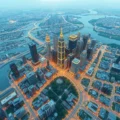Alright, let’s be real. Who *hasn’t* felt that familiar clench in their stomach upon seeing brake lights stretching into the horizon? That sinking feeling as your commute transforms into an exasperating crawl. We’ve all been trapped in that slow-moving metal snake, watching the minutes, maybe even hours, tick away.
It’s the bane of modern existence for many, a frustrating bottleneck that costs us time, fuel, and patience. But what if you could see it coming? What if you could actually *predict* those soul-crushing traffic jams *before* your wheels even hit the notorious hotspot? What if you could actively dodge the mess?
Here’s the good news: This isn’t science fiction anymore. Artificial Intelligence (AI) is rapidly making this a reality, transforming the way we understand and navigate urban mobility.
Table of Contents
The Pain of Unpredictable Traffic
Traffic isn’t just an inconvenience; it has tangible costs. Lost productivity, wasted fuel, increased vehicle wear and tear, higher emissions, and significant stress on drivers. Traditional methods of traffic reporting often rely on real-time data – meaning you only know about the jam once you (or someone else) is already stuck in it. While helpful for immediate warnings, this reactive approach doesn’t allow for proactive avoidance on a large scale.
It’s like only being told a storm is coming when the first raindrops hit your windshield. You can pull over, but wouldn’t it be better to have known hours ago so you could take a different route entirely?
Speaking of the pain and the promise of a solution, sometimes seeing is believing. We put together a little visual explaining this concept. Check it out below:
Enter AI: The Traffic Time Traveler?
Okay, maybe not a literal time machine, but AI gets pretty close when it comes to anticipating traffic flow. Instead of just reacting to current conditions, AI systems are designed to analyze patterns and predict future states based on vast amounts of data.
Think of it as a super-smart detective that doesn’t just look at the accident scene but studies everything that led up to it, understands all the variables, and can predict where the *next* accident (or jam) is most likely to occur.
The core power of AI in traffic prediction lies in its ability to process and learn from diverse, high-volume, and high-velocity data streams – often referred to as Big Data.
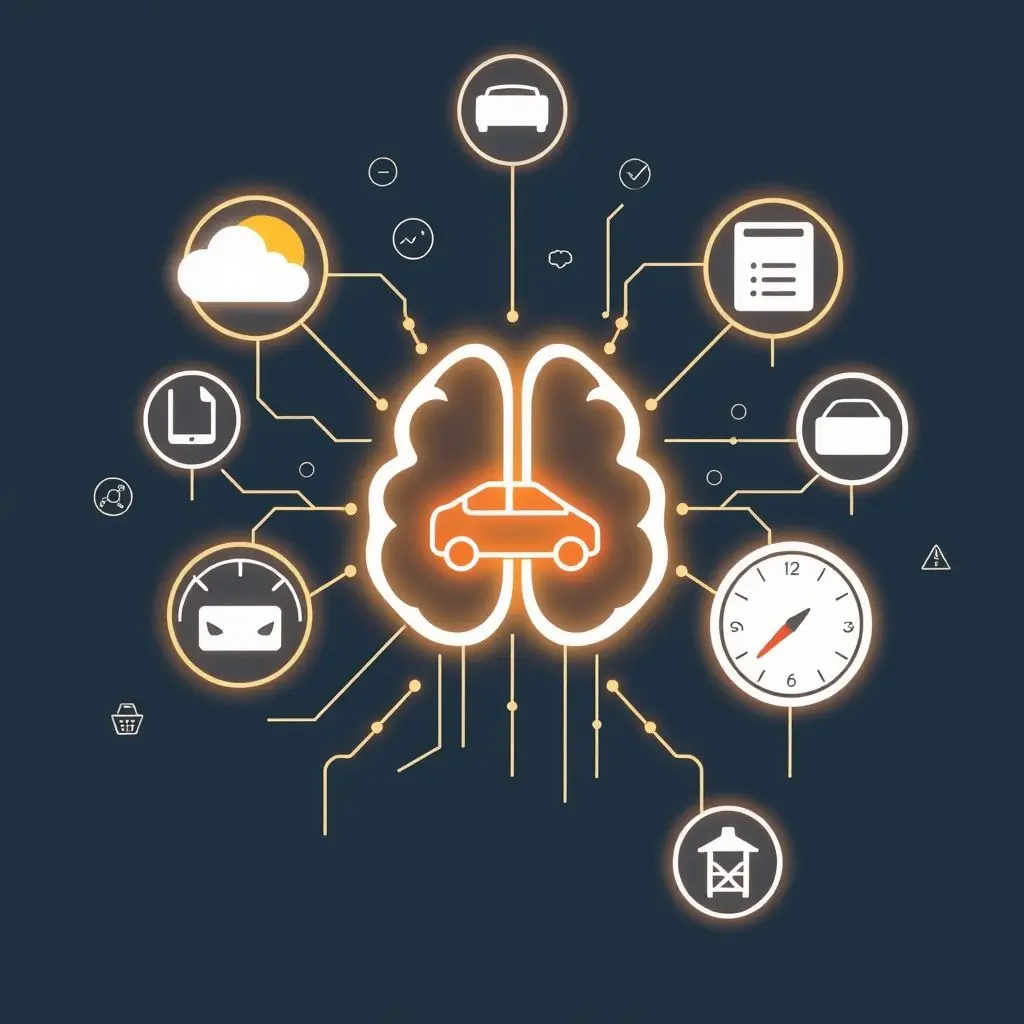
How Does AI Predict Jams Before They Form?
This isn’t just about knowing where traffic is *now*. It’s about predicting where it *will be* in 30 minutes, an hour, or even several hours from now. This capability comes from feeding AI models an incredible diet of information:
1. Historical Traffic Data
This is the foundation. AI systems analyze years of data about traffic flow on specific roads at particular times of day, days of the week, and even times of the year. It learns patterns: where and when congestion typically builds up during morning commutes, evening rush hour, holiday periods, or weekend shopping times.
2. Real-time Conditions
This layer provides the crucial context of the present moment. Data from GPS devices in vehicles, traffic sensors embedded in roads, connected cars, and even anonymized data from navigation app users provides live updates on vehicle speeds, traffic volume, and incidents like accidents or sudden slowdowns. AI integrates this live pulse with historical patterns.
3. External Factors
Traffic isn’t just about the number of cars; it’s influenced by everything happening around the road network. AI models incorporate data on:
- Weather Forecasts: Rain, snow, fog, and even strong winds can significantly impact driving speed and increase the likelihood of incidents leading to jams.
- Public Event Schedules: Concerts, sports games, festivals, and large conventions draw crowds and vehicles, causing predictable surges in traffic around specific venues at specific times.
- Roadwork and Closures: Planned construction or unexpected road closures divert traffic onto alternative routes, often causing congestion cascades elsewhere.
- Holiday and School Schedules: Traffic patterns change dramatically during school breaks or public holidays.
- Social Media and News Feeds (sometimes): In some advanced systems, analyzing public reports can provide early warnings of unexpected incidents.
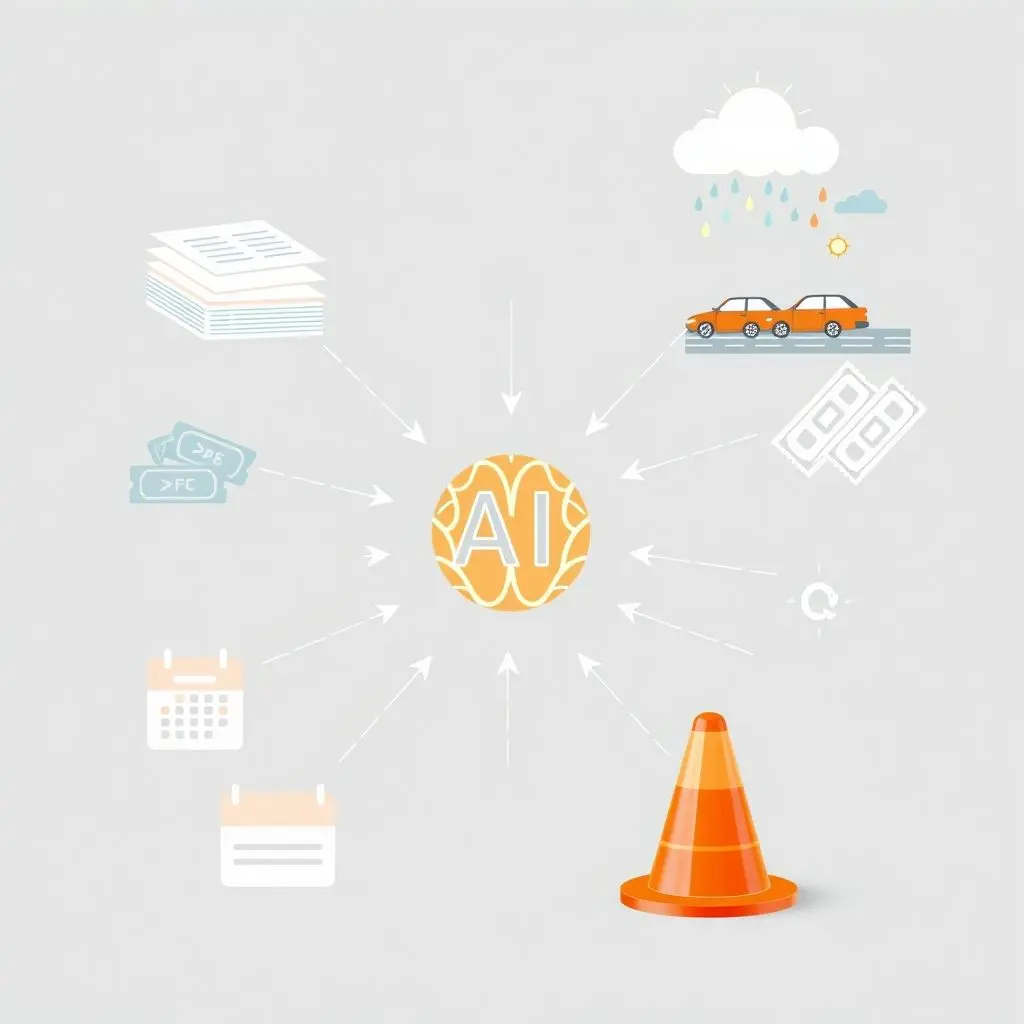
4. Complex Algorithms and Machine Learning
Once the data is collected, machine learning algorithms get to work. Models like Recurrent Neural Networks (RNNs) or Long Short-Term Memory (LSTM) networks are particularly good at recognizing patterns in sequences (like time-series data, which traffic flow is). They learn the complex, non-linear relationships between all the input variables and the resulting traffic conditions.
By processing massive datasets, the AI refines its understanding of how different factors combine to create congestion. It can spot subtle early warning signs that a human observer or simpler system might miss.
Applications and the Impact on Your Daily Drive
So, where do we see this AI prediction in action?
In Your Navigation App
This is perhaps the most common touchpoint. Advanced navigation apps no longer just show you the current traffic overlay. They use predictive AI to estimate your arrival time based on predicted traffic flow along various routes. Crucially, they can proactively suggest alternative routes *before* you hit the predicted jam point, saving you time and fuel. It’s the difference between being warned about traffic and being guided *around* it.
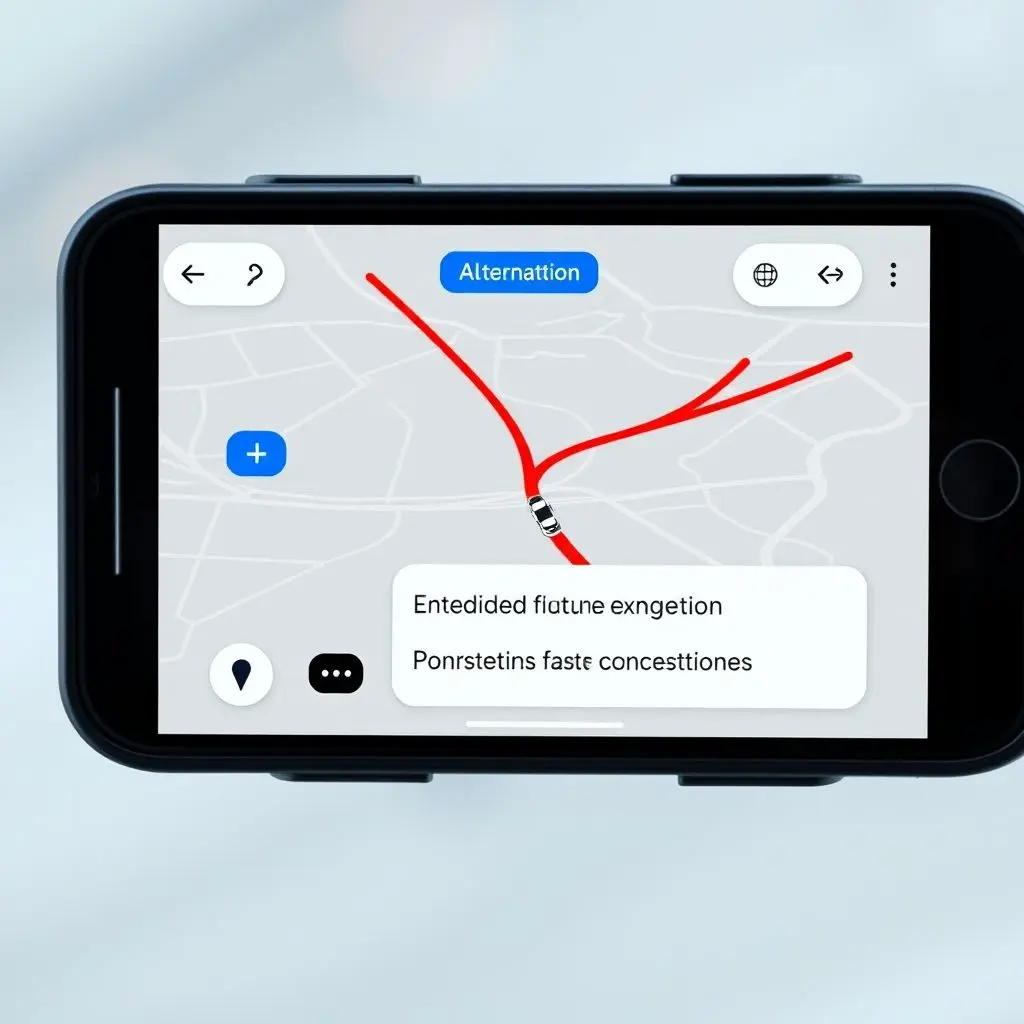
Smart City Traffic Management
Beyond individual navigation, cities are leveraging AI for smarter traffic management. By predicting where congestion is likely to occur, traffic lights can be dynamically adjusted, ramp meters (at highway entrances) can control flow, and electronic signs can warn drivers or suggest detours well in advance. This city-wide optimization aims to keep traffic flowing more smoothly overall.
Logistics and Delivery
For businesses relying on timely deliveries, predictive traffic AI is invaluable. It allows for more accurate scheduling, optimized routing for delivery fleets, and reduced fuel costs. This efficiency can translate to faster service and lower costs for consumers too.
Benefits You Can Actually Feel
The promise of predictive traffic AI isn’t just about cool technology; it’s about improving quality of life:
- Saving Time: Proactive rerouting means avoiding delays altogether.
- Saving Money: Less time stuck in stop-and-go traffic means burning less fuel.
- Reducing Stress: Knowing you’re taking the optimal route or successfully avoiding a known jam significantly lowers driving stress.
- Lower Emissions: Smoother traffic flow reduces idling time and stop-start acceleration, contributing to lower vehicle emissions.
Challenges and the Road Ahead
While incredibly promising, AI traffic prediction isn’t without its hurdles. Accuracy depends heavily on the volume and quality of data – sparse data in certain areas or unexpected, non-recurring events (like a sudden emergency closure) can still impact predictions. Data privacy concerns surrounding the collection of mobility data are also a significant factor. Furthermore, the system relies on a certain percentage of drivers actually *using* the recommended routes for the overall benefit to be realized.
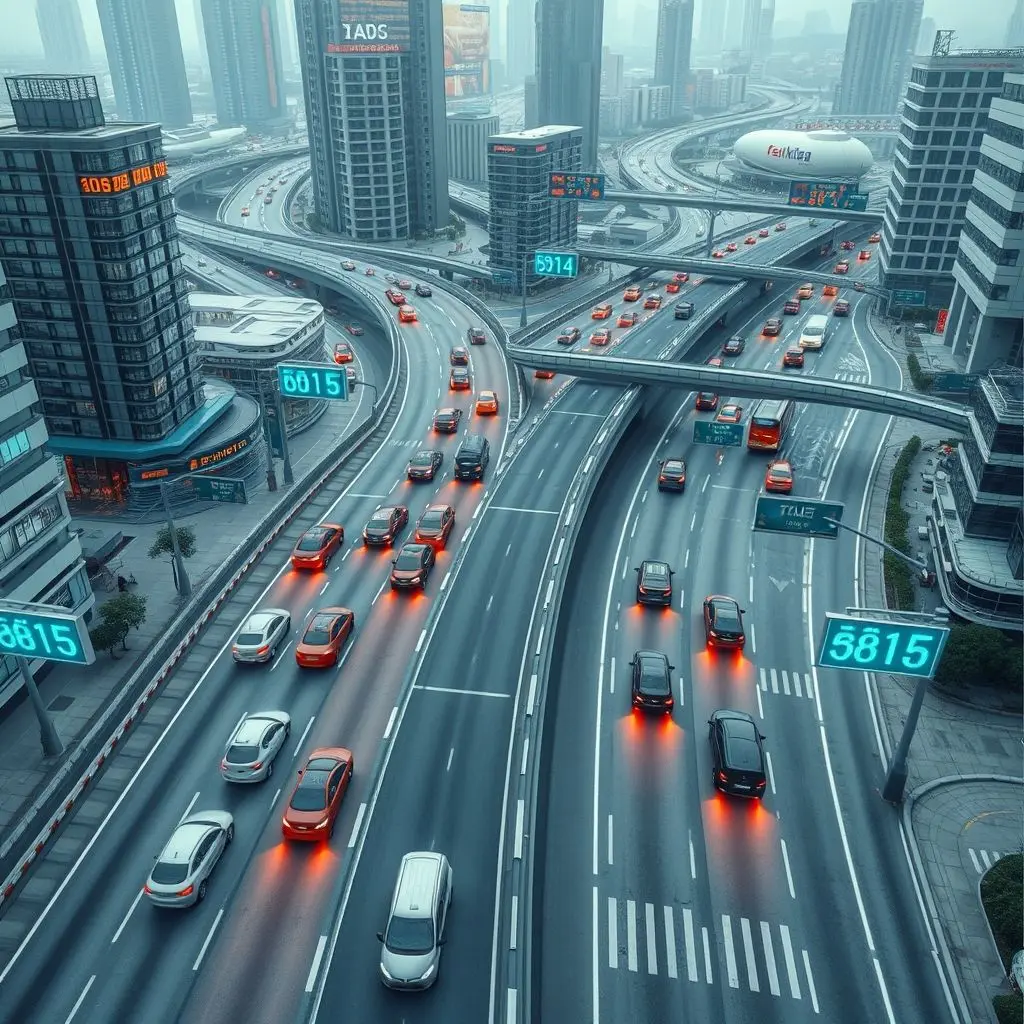
Looking ahead, as more vehicles become connected and smart city infrastructure evolves, the accuracy and reach of predictive traffic AI will only increase. We could see even more dynamic route planning, personalized commute suggestions, and potentially even integration with autonomous vehicle systems for seamless, congestion-aware travel.
Frequently Asked Questions
Q: Is this technology available in the navigation apps I use today?
A: Yes, major navigation apps like Google Maps, Waze (which is owned by Google), Apple Maps, and others already incorporate predictive algorithms to estimate travel times and suggest alternative routes based on anticipated traffic conditions.
Q: How far in advance can AI predict traffic jams?
A: This varies depending on the sophistication of the system and the availability of data, but advanced models can make reasonably accurate predictions for traffic conditions several hours into the future, particularly for recurring patterns like rush hour.
Q: Is my personal driving data being used for this?
A: Navigation apps typically use anonymized and aggregated data from many users to understand overall traffic flow and patterns. While your real-time location is used for your own navigation, the data contributing to predictive models is generally processed in a way that doesn’t identify individual users.
Q: What happens if there’s a sudden, unexpected event?
A: Sudden incidents (accidents, unexpected road closures) are harder to predict far in advance. However, AI systems are designed to quickly integrate real-time data about such events as they happen, rapidly updating predictions and rerouting suggestions for users in the affected area.
Beyond the Gridlock
The ability to anticipate traffic congestion before it fully materializes is a significant leap forward. It moves us from a reactive stance – simply reporting delays – to a proactive one, enabling individuals and cities to make smarter decisions about travel and infrastructure. This isn’t just about shaving a few minutes off your commute; it’s about creating more efficient, less stressful, and more sustainable transportation systems for everyone. The journey towards truly intelligent traffic management is ongoing, and AI is undoubtedly paving the way.




